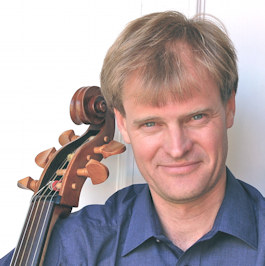Hello – and welcome!
This website integrates several features. First, it profiles my work as composer, musical director, Baroque cellist, lecturer. Second, it will continuously be expanded to serve as repository of recordings, videos, texts and images. Over time, it should incorporate multiple functionalities, such as those of an archive, a research hub, a music shop and an exchange node.
Orange-coloured links lead you to factual information, such as a cv, list of works, reviews, etc. Olive-coloured links invite your perceptive participation – here you may listen to music, watch performances, peruse various text, purchase CDs, scores and sheet music or contact me. The icons on the index page serve as shortcuts to the most important pages. Destination pages contain customized side-menus that facilitate further detailed navigation.
Enjoy your visit and don’t hesitate to send me your questions, comments or requests.
Hans Huyssen
 Hans Huyssen is a composer, Baroque cellist and conductor with a special love for early European Baroque music, rare traditions of indigenous South African music, as well as contemporary music of the kind that meaningfully responds to relevant contexts. In musicological studies accompanying his practical work he has applied complexity theory to music, developing a practice-based epistemology that facilitates the framing of music as complex phenomenon. Further work from this vantage point aims at outlining a systems-orientated, interdisciplinary approach that principally includes the whole ‘ecology’ of a musical event and might therefore perhaps best be described as musecology.
Hans Huyssen is a composer, Baroque cellist and conductor with a special love for early European Baroque music, rare traditions of indigenous South African music, as well as contemporary music of the kind that meaningfully responds to relevant contexts. In musicological studies accompanying his practical work he has applied complexity theory to music, developing a practice-based epistemology that facilitates the framing of music as complex phenomenon. Further work from this vantage point aims at outlining a systems-orientated, interdisciplinary approach that principally includes the whole ‘ecology’ of a musical event and might therefore perhaps best be described as musecology.
Complexity thinking has enabled Huyssen to integrate diverse musical interests and to combine artistic and academic work in many different ways. Performances as artistic director of the Munich based ensemble for Early & Contemporary Music così facciamo, as well as the Cape Consort in Cape Town, require him to commute between Germany and South Africa frequently.
Huyssen is a STIAS fellow, holds a NRF research rating for his work aimed at facilitating intercultural dialogues in South Africa and was a recipient of the Helgaard Steyn Award, South Africa’s most prestigious composition prize. He was a senior lecturer at the Odeion School of Music at the University of the Free State and at the South African College of Music of the University of Cape Town, to which he is still affiliated as associate researcher.
He is founder of mucavi records, the only South African CD-label locally producing recordings of early music on period instruments.
Horsetail Capereed
Elegia capensis